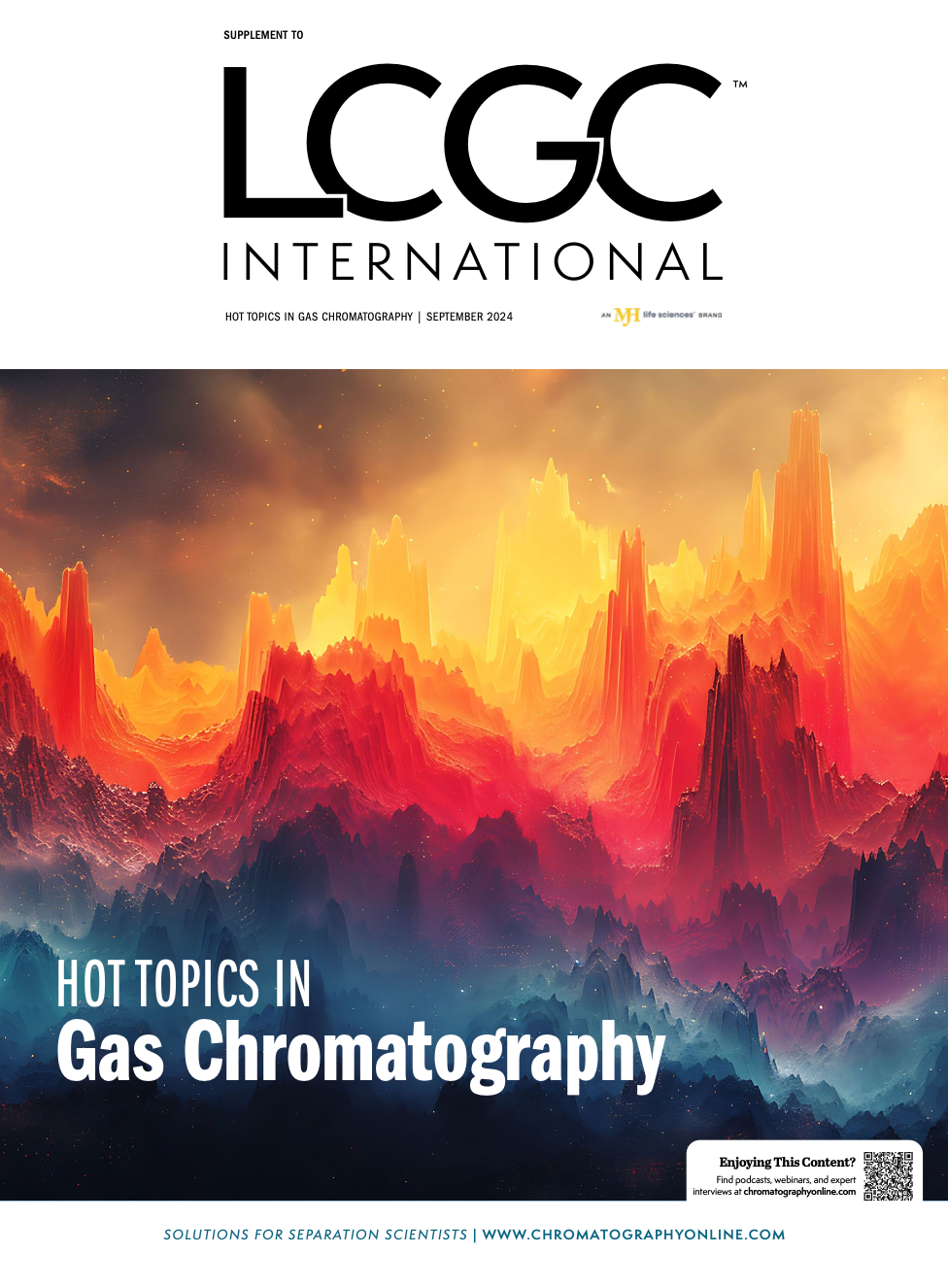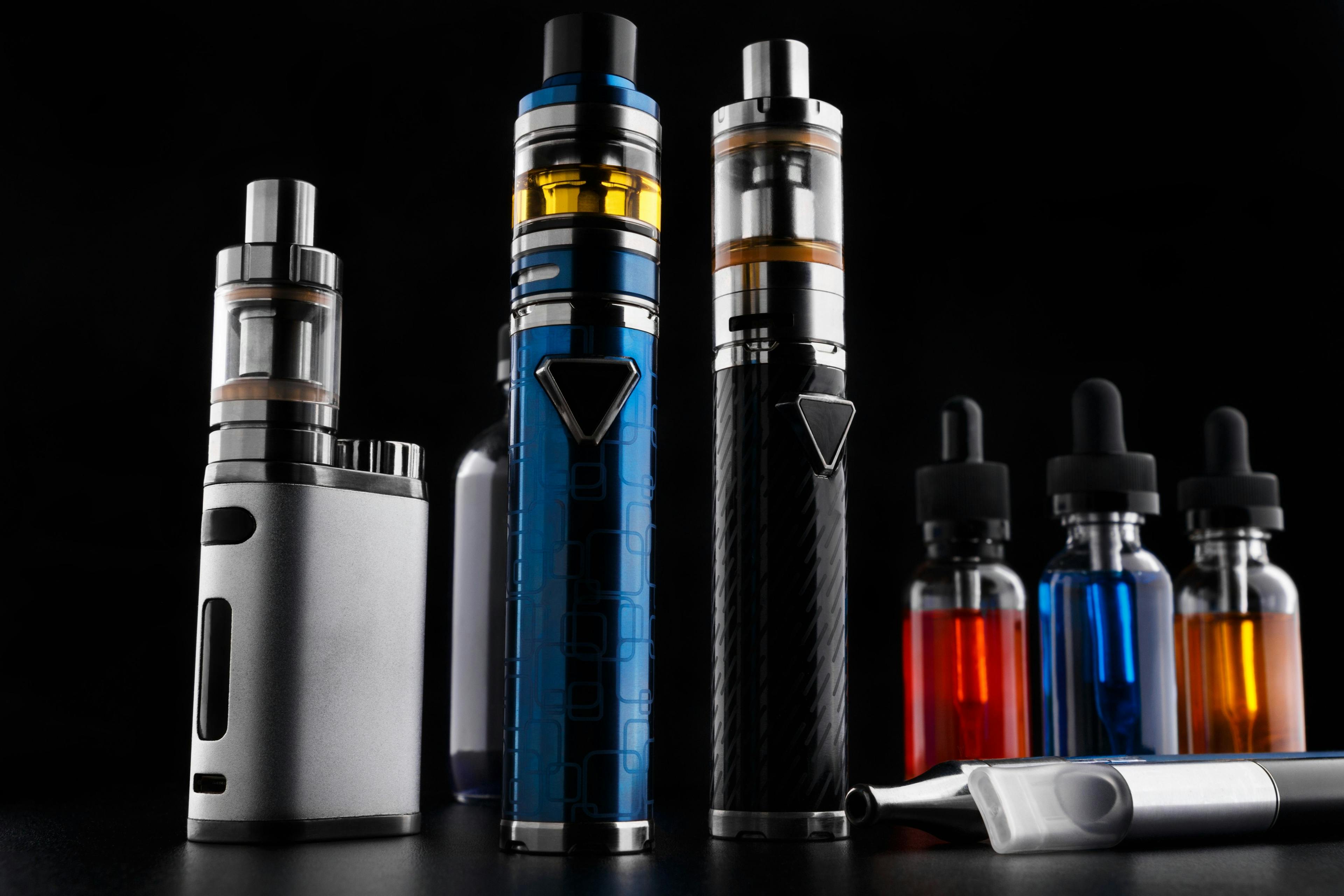Identifying and Rectifying the Misuse of Retention Indices in Gas Chromatography
LCGC International spoke to Phil Marriott and Humberto Bizzo about a recent paper they published identifying the incorrect use of retention indices in gas chromatography and how this problem can be rectified in practice.
You recently published a popular paper entitled “Use and Abuse of Retention Indices in Gas Chromatography” (1). Firstly, can you explain what retention indices (RI) are and what role they play in a positive way?
Humberto Bizzo: The retention index (RI) in gas chromatography (GC) is a concept initially promulgated by Kováts (2). Whilst we might say that its basis is in fundamental notions of physical chemistry relationships defining the retention of a compound with respect to a series of n-alkanes, the beauty of the concept is that it can be reduced to a simple formula based on the logarithm of the retention of a compound, to that of n-alkanes whose retentions bracket that of the compound.
The other retention index system, the van den Dool and Kratz method, uses a linear retention relationship, again compared with a suite of n-alkanes under temperature programmed analysis conditions. (3). Implementing the retention index concept, and calculating the RI value can be very simply done in any laboratory.
The essence of the concept is that a RI value is essentially constant on a given phase at a defined temperature, and is independent of the phase thickness and the carrier flow velocity. Since a nominal phase type is available from many manufacturers, experimentally determined RI values on that phase may vary—and even on the same manufacturer’s phase. Compilations of RI values such as the National Institute of Standards and Technology (NIST) Webbook (4), list a broad array of values on various phases and conditions such as temperature, or temperature program rate, column manufacturer and film thickness etc. For essential oil components, Adams’ book (5) is the authoritative source, but unlike NIST, Adams is prescriptive as to the conditions, such a specific column phase, manufacturer, length, film thickness, temperature program rate, et cetera, so that the RI may be defined with much greater certainty.
How does this assist in the qualitative analysis of a compound?
Phil Marriott: If the retention of a compound can be accurately assigned, via the RI value, then this is evidence of possible identity. It does not certify the identity, but is an a priori suggestion. Equally important is that if the RI is clearly incorrect, then a proposed compound identity will be incorrect. So the RI is a contributory factor in deciding if a compound has been identified.
Additionally, if we consider that mass spectrometry (MS) has its limitations regarding qualitative information, with similar mass spectra for different compounds, especially for (but not limited to) isomers, then MS is not the ideal chemical characterization tool that some would believe. At least a second identification/characterization technique must be used for qualitative analysis, with RI being an obvious choice. The J. Agric. Food Chem. article gives a detailed requirement for characterization in GC–MS (6).
Can you explain why you think that retention indices are abused and illustrate this with some practical examples?
Bizzo: The idea of “abuse” of retention indices is both to do with the calculation of retention indices, and also in how they are used. Incorrect calculation and referring to either Kováts indices, or van den Dool and Kratz indices incorrectly has been noted, but also in the way database index values are used.
Practical examples are taken from the literature, or from the review process, and so specific examples will not be described here. Tabulated data where n-alkanes are assigned values quite different from the expected “n x 100” call into question the calculation process, which means experimental RI will be incorrect. This makes comparison with reference RI values meaningless. Since reference RI values on a specific phase vary over a range, either for Kováts or van den Dool and Kratz indices, then simply randomly finding a value that exactly matches the experimental value appears to be contrary to the notion of using the index to confirm an identity.
Another issue we have observed is that many times only experimental RI are tabulated, but not those from literature used for comparison. Actually, in several articles not even the reference literature is cited. We understand (at least to us) it is necessary to list both experimental and reference data, quoting the literature used. This is very useful for the authors to check the compatibility of the RI, and very helpful for ad hoc reviewers to double check the comparisons during the editorial process. A little attention to this single point would result in a substantial reduction of misidentification.
Of course the best affirmation of compound identity is to use an authentic standard with the same analysis conditions. If the retention time is the same for the experimental compound and the reference, then the RI value will be the same. This should mean that, in this very specific case, a library of retention indices need not be consulted, but for consistency may be quoted.
Our colleague, Daniel Joulain (Research Laboratories, Robertet SA, Grasse, France) recognized 30 years ago in his article Modern Analysis Methodologies: Use and Abuse. Perfumer & Flavorist, 19 (1994) 5-17” (7) that there is scope for implementation of the analytical method to be similarly “abused,” so this is by no means a present-day problem.
You highlighted that caution needs to be taken when quoting enantioseparation RI data. Can you explain why?
Marriott: It is not so much enantioseparation data, but the data for enantiomers. Enantioseparation, for example on an enantioselective phase, is a very specific application of both analyte, and stationary phase. There are no generally available compilations of analyte RI on given enantioselective phases. Reference RI data are for common stationary phases. The concern that we raise is that some (many) authors will quote data for the enantiomer of a compound, when using an achiral phase.
Since both (R) and (S) enantiomers will have exactly the same retention on an achiral phase, claiming one or the other is essentially meaningless because either could be correct. Since most often mass spectrometry data will be available in a GC–MS experiment, the enantiomers will also have indistinguishable MS data.
We might ask why a RI tabulation would have (R) and (S) values listed even for achiral phases. The logical answer is that a compound of a particular chirality may have been analyzed on the achiral phase, and the respective value simply recorded for the enantiomer with its chirality specified. Therefore we would recommend that the value can be quoted, but either a footnote should be included that the chirality is not confirmed,or the chirality information should be omitted. If further information is available, such that the analysed compound has (or is believed to have) a given chirality, quoting this can be appropriate.
You also detailed methods to estimate RI in multi- and comprehensive 2D GC. Can you briefly highlight your advice here?
Marriott: Perhaps it is necessary to briefly review the methods to estimate RI data in these techniques. Calculations of RI data in multidimensional gas chromatography (MDGC) and comprehensive two-dimensional gas chromatography (GC×GC) are non-standard analyses, and require specific methods for their estimation. The first column RI value can be recorded with a mid-point detector in MDGC, or approximated by the total retention time on the 1D and very short 2D columns in GC×GC. Experimentally — because the RI calculation requires GC analysis of n-alkanes that bracket the analyte retention—it is necessary to implement an approach to obtain the RI value of the 2D column for MDGC and GC×GC. For MDGC, where heart-cutting and ideally some (cryo)trapping approach is used, it is necessary to reinject the n-alkanes on the second column under the same conditions as the analyte. This can be done isothermally or, more likely, with temperature programming, i.e. cooling the oven after trapping the analytes/n-alkanes, then using a second oven program. This gives access to RI values on both the 1D and 2D columns, which provides an additional confirmation of identity. In this case, using popular column phases for which RI data are available is required. For GC×GC, not surprisingly, the situation is a little more complex because a completely innovative approach is required in order to acquire the requisite n-alkane retention data on the 2D column. Briefly, we can either make repeated injections of n-alkanes throughout the temperature programmed GC×GC analysis, or use a method to acquire n-alkane retention data using a MDGC approach with modulation. These give a series of iso-volatility plots that essentially can be interpolated to calculate 2I, where 2I is the retention index on the 2D column. Again, having two independent RI values on two disparate phases should improve the certainty of identification if both RI values match. The GC×GC method should be particularly informative because it embodies the concept of the 2D structured retentions in GC×GC, but also should address the idea of GC×GC representing a unique ‘chemical property map,' with the 2D position being akin to chemical identity.
Do you have any general advice on the correct use of RI?
Marriott: We provide a flowchart for identification that incorporates RI as a valuable factor in GC analysis (1). But the necessity to understand the basic principles (or fundamental principle) RI data, perform the correct calculation(s), and employ tables or libraries of RI in the correct manner, is paramount.
What was the genesis of your article? What was the underlying reason for it to be written?
Bizzo: We’ve been working with essential oils and gas chromatography for 30 years now. We have observed an increase in misapplication, both in the published literature as well as in our work as ad hoc referees, of retention indices, including wrong naming, wrong calculations and equivocal identifications. Of concern, there are lots of wrong data based in literature comparisons. When checking the referenced literature, we noted that some data were wrong also. Our attention was called by this sort of snowball effect. During a lecture by myself to Marriott’s research group, we discussed this issue and it seemed appropriate to address this in a written article.
What do you see as the primary goal that you wish this article to have as an outcome?
Marriott: To bring the issue to discussion, especially regarding the ad hoc reviewing process. Peer review is a very important step for scientific publication. Whenever we review a manuscript, we assume part (even if only small) of the responsibility for the data to be published. Retention indices and identification should be checked carefully, otherwise mistakes and misinterpretation will propagate. Again, the J. Agric. Food Chem. guidelines for checking compound identification is sound advice (6).
Where does the problem of the poor use of retention indices lie? Education? Lack of understanding of principles? Too much reliance on automated methods? Too little time to carefully review results when high throughout is sometimes the goal? Or what else?
Bizzo: All these factors have their contributing roles, but we would give emphasis to gaps in the education process, which can be feed by automation of methods and equipment. We cannot prescind overreliance on informatics/computing tools, for sure, but neither in appropriate thinking and understanding of what we are doing in our laboratories. We cannot blame the equipment for such errors; the responsibility will always be on the human part of the process.
Kovács developed the RI concept. How do you think he would react to the apparent poor understanding of this retention principle. With mass spectrometry do we still need RI?
MarriotT: The RI concept was developed over 50 years ago. In the present case of presumed much better identification of compounds through mass spectrometry, do we still need to use retention indices?
Certainly, we do. Mass spectrometry is a very powerful technique, but has its limitations as in any technique. Isomers will produce very similar mass spectra, and frequently these are too similar for a discriminating comparison to be made, either by computer software or the human. In such cases, RI are essential as a contributor to distinction between compounds, providing RI values are sufficiently different from each other and can be applied reliably.
We would expect Kovács to reaffirm his belief in the value of his RI concept that has been synonymous with his name for many decades.
This article had very good downloads. Have you had much feedback from the article?
Bizzo: Yes, we have had comments on our article. And upon reflection, maybe RI is just one of the many concepts that require close attention in gas chromatography analysis. Maybe there other principles of chromatography that should be reviewed similarly by analysts that require closer attention and understanding? We suggest that even basic concepts such as peak widths—either at baseline (wb), for at half height (wh)—and therefore correct calculation of efficiencies (n; N), and peak asymmetries (As) also need to be carefully checked rather than rely on calculation provided by data systems.
References
(1) Bizzo, H. R.; Brilante, N. S.; Nolvachai, Y.; Marriott, P. J. Use and abuse of retention Indices in Gas Chromatography. J. Chrom. A 2023, 1708, 464376. DOI: 10.1016/j.chroma.2023.464376
(2) Kováts, E. Gas-chromatographische Charakterisierung organischer Verbindungen. Teil 1: Retentionsindices aliphatischer Halogenide, Alkohole, Aldehyde und Ketone. Helv. Chem. Acta 1958, 41 (7), 1915–1932. DOI: 10.1002/hlca.19580410703
(3) van den Dool, H.; Kratz, P. Dec. A generalization of the Tetention Index System Including Linear Temperature Programmed Gas—liquid Partition Chromatography. J. Chrom. A 1963, 11, 463–471. DOI: 10.1016/S0021-9673(01)80947-X
(4) National Institute of Standards and Technology. https://webbook.nist.gov/chemistry/ (accessed 2024-08-16).
(5) Adams, R. P. Identification of Essential Oil Components by Gas Chromatography/Mass Spectrometry, 4th ed.; Allured Publishing Co., 2007.
(6) Molyneux, R. J.; Schieberle, P. Compound identification: a Journal of Agricultural and Food Chemistry perspective. J. Agric. Food Chem. 2007, 55, 4625–4629. DOI: 10.1021/jf070242j
(7) Joulain, D. Modern Analysis Methodologies: Use and Abuse. Perfum. Flavor. 1994, 19, 5–17.
About the Interviewees
Philip Marriott completed undergraduate training and Ph.D. research at LaTrobe University (B.Sc. (Hons); Ph.D. 1980) then continued post-doc research at the University of Bristol (Organic Geochemistry). Academic appointments include the National University of Singapore, then returned to Melbourne to RMIT and Monash Universities. Primary research is in comprehensive two-dimensional GC (GC×GC) and multidimensional GC, and mass spectrometry, including fundamental development and a broad applications base. This includes pesticides; petrochemicals; pharmaceuticals; foods, flavours and beverages; natural products; and toxins. Therefore, applications feature strongly amongst key directions for the separations technologies he has developed. He has had visiting appointments in China, South Korea, Brazil, and Malaysia.

Humberto Bizzo has a B.Sc. in Industrial Chemistry from the Fluminense Federal University (1987) and D.Sc. in Organic Chemistry from the Federal University of Rio de Janeiro – (UFRJ; 2001). He is a post-doc and visiting Professor at the University of Turin. He held previous jobs at British American Tobacco and Roche. Currently, he is employed as a senior researcher at the Brazilian Agricultural Research Corporation (Embrapa) working with essential oils, plant volatiles, food aroma, and GC-MS. He is a supervisor and lecturer in Food Science at UFRJ. He is also an associated editor of The Journal of Essential Oil Research and Permanent Scientific Committee member of the International Symposium on Essential Oils.


Study Examines Impact of Zwitterionic Liquid Structures on Volatile Carboxylic Acid Separation in GC
March 28th 2025Iowa State University researchers evaluated imidazolium-based ZILs with sulfonate and triflimide anions to understand the influence of ZILs’ chemical structures on polar analyte separation.
Quantifying Microplastics in Meconium Samples Using Pyrolysis–GC-MS
March 26th 2025Using pyrolysis-gas chromatography and mass spectrometry, scientists from Fudan University and the Putuo District Center for Disease Control and Prevention detected and quantified microplastics in newborn stool samples.

















